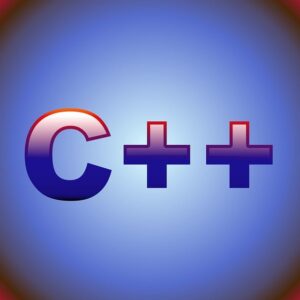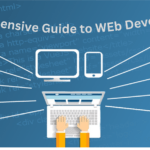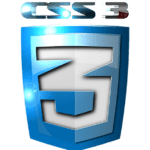C Language: The Backbone of Modern Programming

Introduction to C
The C programming language, a paragon of efficiency and versatility, has been the cornerstone of software development for decades. Conceived in the early 1970s by Dennis Ritchie at Bell Labs, C rapidly ascended to prominence due to its unparalleled combination of simplicity and power. This venerable language has not only withstood the test of time but continues to exert a profound influence on the landscape of modern computing.
C’s significance in the programming world cannot be overstated. It serves as the progenitor of numerous contemporary languages, including C++, Java, and Python. The language’s enduring relevance stems from its ability to provide low-level access to computer memory and hardware, while simultaneously offering high-level constructs that facilitate complex program design.
Core Features of C
C’s hallmark features of simplicity and efficiency have cemented its position as a favored tool among programmers. The language’s straightforward syntax and minimal overhead make it an ideal choice for crafting lean, performant code. This efficiency translates into faster execution times and reduced resource consumption, critical factors in many computing environments.
Portability across platforms is another of C’s defining characteristics. Code written in C can be compiled and run on a vast array of hardware architectures and operating systems with minimal modifications. This cross-platform compatibility has been instrumental in C’s widespread adoption and longevity.
Low-level memory access, a distinctive feature of C, allows programmers to manipulate computer memory directly. This capability, while powerful, requires judicious use to avoid potential pitfalls such as buffer overflows or memory leaks. Nonetheless, it provides unparalleled control over system resources, making C indispensable for system programming and embedded systems development.
C Language Syntax
The basic structure of a C program is elegantly simple. It typically begins with preprocessor directives, followed by function declarations, and then the main() function, which serves as the entry point for program execution. This structured approach promotes clarity and facilitates easy comprehension of program flow.
Variables and data types form the building blocks of C programs. The language offers a range of primitive data types, including integers, floating-point numbers, and characters. These can be combined to create more complex data structures, allowing programmers to model real-world entities and relationships effectively.
Operators and expressions in C provide the means to manipulate data and perform computations. From basic arithmetic operations to complex bitwise manipulations, C offers a comprehensive set of operators. The language’s expression syntax is both intuitive and flexible, enabling the construction of sophisticated logical and mathematical operations.
Control Structures in C
Conditional statements in C, such as if-else constructs, empower programmers to implement decision-making logic in their code. These structures allow programs to execute different code paths based on specified conditions, enhancing the versatility and responsiveness of applications.
Loops, another fundamental control structure, facilitate repetitive task execution. C provides for, while, and do-while loops, each suited to different scenarios. Mastery of these looping constructs is essential for efficient algorithm implementation and data processing.
Switch statements offer an elegant solution for handling multiple conditional branches. This construct is particularly useful when dealing with enumerated types or discrete sets of values, providing a more readable and potentially more efficient alternative to lengthy if-else chains.
Functions in C
Function declaration and definition are pivotal concepts in C programming. Functions encapsulate reusable code blocks, promoting modularity and reducing redundancy. The clear separation between function declaration (prototype) and definition supports better code organization and compilation efficiency.
Parameters and return values facilitate communication between functions, allowing for the creation of highly modular and reusable code. C’s approach to function parameters, which includes pass-by-value semantics, requires careful consideration to ensure efficient data handling.
Recursion, a powerful programming technique, is fully supported in C. Recursive functions can elegantly solve complex problems, particularly those with inherently recursive structures. However, judicious use is necessary to avoid stack overflow issues and ensure optimal performance.
Arrays and Pointers
One-dimensional arrays in C provide a mechanism for storing and manipulating collections of homogeneous data elements. These versatile constructs find applications in numerous algorithms and data structures, from simple list processing to complex numerical computations.
Multidimensional arrays extend this concept to higher dimensions, enabling the representation of matrices, tensors, and other complex data structures. Mastery of multidimensional array manipulation is crucial for tasks such as image processing and scientific computing.
Pointer arithmetic, a distinctive feature of C, allows for efficient memory traversal and manipulation. This low-level capability, while powerful, requires careful handling to avoid potential pitfalls such as buffer overruns or undefined behavior. Nonetheless, proficient use of pointer arithmetic can lead to highly optimized code, particularly in performance-critical applications.
Memory Management
Understanding the distinction between stack and heap memory is crucial for effective C programming. Stack memory, used for local variables and function call management, offers fast allocation and deallocation but is limited in size. Heap memory, on the other hand, provides dynamic allocation capabilities, allowing for flexible memory usage at runtime.
Dynamic memory allocation, facilitated by functions like malloc() and free(), enables programs to request and release memory as needed. This capability is essential for implementing data structures of variable size and managing resources efficiently in long-running applications.
Memory leaks, a common pitfall in C programming, occur when allocated memory is not properly deallocated. Vigilant memory management practices, including careful tracking of allocations and consistent use of deallocation functions, are essential to prevent these issues and ensure robust, long-running applications.
Structures and Unions
Creating user-defined data types through structures allows programmers to group related data elements together. This capability facilitates the modeling of complex entities and relationships, enhancing code readability and maintainability.
Nested structures extend this concept further, enabling the creation of hierarchical data representations. This feature is particularly useful in scenarios involving complex data relationships or when modeling real-world objects with multiple levels of attributes.
Unions provide a mechanism for storing different data types in the same memory location. While less commonly used than structures, unions find applications in scenarios requiring memory conservation or when dealing with data that can take on multiple forms.
File Handling in C
File operations in C enable programs to interact with persistent storage, allowing for data persistence and exchange. The language provides a rich set of functions for file manipulation, including reading, writing, and seeking within files.
Error handling in file operations is crucial for developing robust applications. C provides mechanisms for detecting and handling file-related errors, allowing programs to gracefully manage scenarios such as file not found or permission denied errors.
Preprocessor Directives
Macros, defined using preprocessor directives, offer a powerful mechanism for code generation and constant definition. While macros can enhance code flexibility and performance, their judicious use is essential to maintain code clarity and avoid potential pitfalls.
Conditional compilation, facilitated by preprocessor directives, allows for the selective inclusion or exclusion of code segments based on defined conditions. This feature is particularly useful for managing platform-specific code or debug-only sections.
Include guards, a preprocessor-based technique, prevent multiple inclusions of header files. This mechanism is crucial for avoiding compilation errors and ensuring consistent behavior across complex projects with multiple interdependent header files.
Advanced C Concepts
Bitwise operations provide low-level manipulation capabilities, essential for tasks such as flag management, data compression, and hardware interfacing. Mastery of these operations is crucial for system-level programming and optimization tasks.
Function pointers enable the implementation of callback mechanisms and dynamic dispatch, enhancing program flexibility. This advanced feature finds applications in event-driven programming, plugin architectures, and algorithm generalization.
Variadic functions allow for the creation of functions that accept a variable number of arguments. While powerful, this feature requires careful handling to ensure type safety and correct argument interpretation.
C Standard Library
The C standard library provides a comprehensive set of functions and utilities that facilitate common programming tasks. From string manipulation to mathematical computations, the standard library offers a rich set of tools that enhance productivity and promote code reuse.
Familiarity with common functions and their usage is essential for effective C programming. Functions for memory management, string handling, and input/output operations form the backbone of many C programs and are crucial for developing robust, efficient applications.
Best Practices in C Programming
Code organization plays a crucial role in maintaining large C projects. Proper structuring of source files, judicious use of header files, and clear separation of concerns contribute to code readability and maintainability.
Adherence to naming conventions enhances code clarity and facilitates collaboration. Consistent naming practices for variables, functions, and types help in creating self-documenting code, reducing the cognitive load on programmers reading or maintaining the codebase.
Robust error handling techniques are essential for developing reliable C applications. Proper use of return values, error codes, and global error variables like errno helps in creating resilient programs that can gracefully handle exceptional conditions.
Debugging C Programs
Familiarity with common debugging tools is crucial for efficient C programming. Tools like GDB (GNU Debugger) provide powerful capabilities for examining program state, setting breakpoints, and tracing execution flow.
Effective debugging techniques, such as strategic placement of print statements and systematic state examination, are essential skills for C programmers. The ability to quickly isolate and rectify issues contributes significantly to development productivity.
C vs. Other Programming Languages
A comparison with C++, C’s object-oriented descendant, reveals both similarities and crucial differences. While C++ extends C with features like classes and templates, C maintains its focus on simplicity and direct hardware access.
In the context of modern languages, C continues to hold a unique position. Its combination of performance, portability, and low-level access makes it irreplaceable in certain domains, even as higher-level languages dominate application development.
Applications of C
System programming remains a stronghold of C. Operating systems, device drivers, and other low-level software components often rely on C’s efficiency and direct hardware access capabilities.
In embedded systems, C’s minimal runtime overhead and precise control over hardware resources make it the language of choice. From automotive control units to consumer electronics, C powers a vast array of embedded applications.
Game development, particularly for performance-critical components, often leverages C. The language’s efficiency and low-level capabilities make it suitable for implementing game engines and other performance-sensitive modules.
Future of C
Ongoing development of the C language, guided by the ISO C standards committee, ensures its continued relevance. Recent standards have introduced new features while maintaining backward compatibility, reflecting the language’s evolution in response to modern programming needs.
C’s relevance in modern computing remains strong, particularly in domains requiring high performance and low-level system access. As computing paradigms evolve, C continues to adapt, maintaining its position as a fundamental tool in the programmer’s toolkit.
Learning Resources for C
Numerous books and online tutorials cater to aspiring C programmers, ranging from beginner-friendly introductions to advanced treatises on language intricacies. Renowned texts like “The C Programming Language” by Kernighan and Ritchie remain invaluable resources.
Engagement with coding challenges and projects provides practical experience crucial for mastering C. Platforms offering algorithmic puzzles and real-world project ideas help solidify theoretical knowledge through hands-on application.
C Programming Community
Vibrant forums and discussion groups dedicated to C programming foster knowledge sharing and problem-solving. These communities provide valuable support for both novice and experienced programmers, facilitating continuous learning and growth.
Participation in open-source projects offers an excellent opportunity to gain real-world C programming experience. Contributing to established projects or initiating new ones enhances skills and provides exposure to collaborative development practices.
Conclusion
The C programming language, with its rich history and enduring relevance, continues to play a pivotal role in the world of software development. Its combination of efficiency, portability, and low-level capabilities ensures its position as a fundamental tool in numerous domains.
For aspiring C programmers, the journey of mastering this language offers not just practical skills, but a deeper understanding of computer architecture and software design principles. The challenges and rewards of C programming pave the way for a fulfilling and impactful career in the ever-evolving field of computer science.






